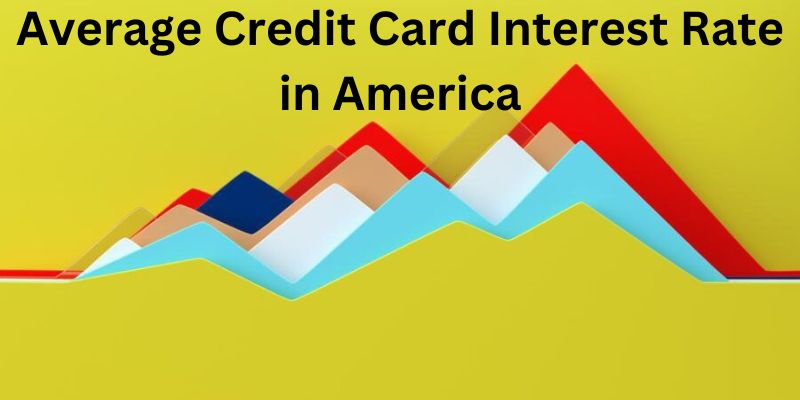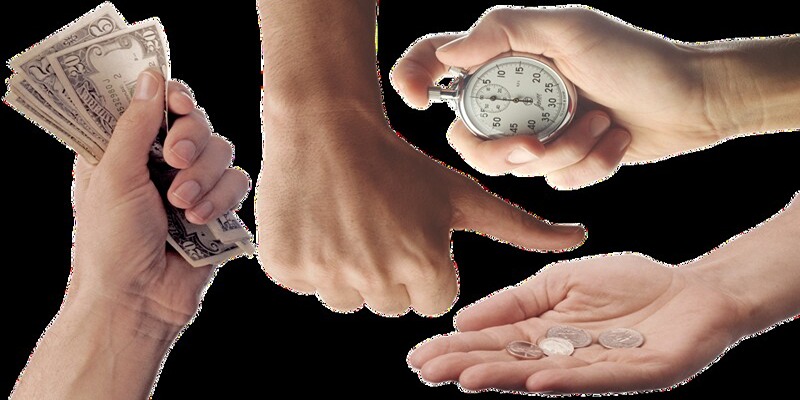Average Credit Card Interest Rate in America
Triston Martin
Nov 27, 2023
Are you aware of how much the average American pays in interest on their credit cards? When managing finances, one of the key concepts is understanding the current inflation rate and how that affects your pocketbook. Knowing and understanding America's Average Credit Card Interest Rate is essential for maintaining financial stability.
In this post, we'll unpack what these numbers mean for regular Americans who use a card regularly (either for rewards or convenience). We'll also explore why rates vary depending on an individual's creditworthiness and spending habits. Finally, we'll consider strategies to reduce your overall interest payments and improve your financial health.
What is the Typical Credit Card Interest Rate in the United States

The typical credit card interest rate in the United States for an individual with average creditworthiness is around 16.70% annually, according to the Federal Reserve. However, this rate can vary depending on your creditworthiness and spending habits.
Those with excellent credit scores may get rates as low as 0%. On the other hand, people who carry balances from month to month may end up paying much higher rates due to balance transfer fees or late payment charges. Additionally, certain types of cards, such as rewards cards, often come with higher interest rates than regular cards.
Inflation is another factor that affects interest rates; when inflation increases, so do interest rates for borrowing money (including using a credit card). Therefore, watching the current inflation rate is important to understand how it affects your pocketbook.
How Does Your Credit Score Affect Your Interest Rate

Your credit score is important in determining the interest rate you'll pay on your credit card debt. Generally, people with higher credit scores will qualify for lower interest rates. Conversely, those with lower scores may be charged a higher rate. Because of this, it's important to understand how your credit score affects the interest rate you're charged.
How much does your credit score affect your average interest rate? The better your score, the lower the interest rate lenders and creditors offer you.
In fact, according to Experian, borrowers with excellent credit (750 or above) can expect to receive an APR of around 14%, whereas borrowers with poor credit (300-579) can expect to pay 24% or higher. This difference could mean hundreds of dollars in savings over the life of your credit card balances.
By understanding how your credit score affects your interest rate, you can take proactive steps to improve it and access better rates on future loans and lines of credit. So keep an eye on your credit score—it pays off!
Different Types of Credit Card Interest Rates
Regarding credit cards, the interest rate is only sometimes a one-size-fits-all solution. Instead, different types of credit cards carry interest rates that can vary depending on your creditworthiness and spending patterns.
One type of credit card is the low-interest or no-interest card. This card type typically carries a very low annual percentage rate (APR), sometimes even 0%, for an introductory period. If you have good credit and usually pay off your balance in full each month, this might be a great option for you. However, if you don't pay off your balance monthly or miss payments, a higher APR may kick in.
The other card type is the rewards credit card, which offers you points or cash back for purchases. While these cards might come with a higher APR than low-interest or no-interest cards, they can be beneficial if you use them wisely and pay off your balance each month.
No matter what type of credit card you have, it's important to understand the different interest rates and how they work to decide which stone is right for you. It's also important to remember that interest rates can change over time depending on your spending habits and credit score.
Knowing and understanding the Average Credit Card Interest Rate in America will help ensure financial stability and help you find the credit card that best suits your needs.
Pros and Cons of Low-Interest Credit Cards
Pros of Low-Interest Credit Cards
The lower overall cost of borrowing
With a low-interest credit card, the interest you pay is significantly lower than other types of cards. This lower can lead to significant savings over time as the total amount paid in interest will be considerably lower than with other cards.
Increased buying power
Since you're paying less interest on your purchases, it allows you more breathing room when making payments on your balance each month and increases buying power when using credit for larger purchases.
Avoid accruing debt quickly.
By taking advantage of the lower rates offered by low-interest credit cards, you can keep your balances from increasing too quickly and avoid accruing debt quickly.
Cons of Low-Interest Credit Cards
Often difficult to qualify for
To be approved for a low-interest credit card, you typically need good or excellent credit, a steady income, and a proven track record of paying bills on time.
Limited reward offers
Since these cards offer lower interest rates, they often come with fewer rewards than other cards, making them less attractive if you want to earn points or cash back.
Unfavourable terms and conditions
Many low-interest credit cards come with unfavourable terms and conditions compared to other cards (such as high balance transfer fees). Knowing all the details is important before signing up for a new card.
Strategies to Reduce Your Overall Credit Card Interest Rate
- One of the best ways to reduce your credit card interest rate is to ensure a good credit score. Paying bills on time and staying current with all payments will help to increase your score over time.
- Additionally, if you are ever in a situation where you cannot pay your bill, contact the issuer immediately – they may be willing to work out an arrangement that won't ruin your credit score.
- Another way to reduce the interest you pay on your card is by taking advantage of promotional rates or balance transfer offers from other credit cards. Many companies offer introductory rates as low as 0% for a certain period, saving you significantly in interest payments if used wisely. Read the fine print on any offers you consider to ensure you understand the terms and conditions before committing.
- Using your card frequently can help to lower your overall interest rate. Those who use their cards are more likely to receive better rates from credit card companies as a reward for their loyalty.
FAQs
Is 10% a good credit card interest rate?
America's average credit card interest rate is around 17.66%, so 10% would be a better-than-average rate.
Is 24% interest on a credit card high?
Yes, 24% is considered a high-interest rate compared to America's average credit card interest rate of 17.66%.
Is 20% interest on a credit card bad?
It depends on your circumstances. While 20% is higher than the average rate of 17.66%, it can be manageable for many people if they use their cards responsibly and keep up with payments.
Conclusion
Understanding America's average credit card interest rate is an important step for anyone considering credit cards as a money management tool. However, it's also vital to understand that your credit score can significantly influence your specific interest rate.
With some research and strategic planning, you can find the best credit card interest rate for your needs. Remember to consider all the pros and cons of low-interest cards and other strategies to reduce your rates further.







